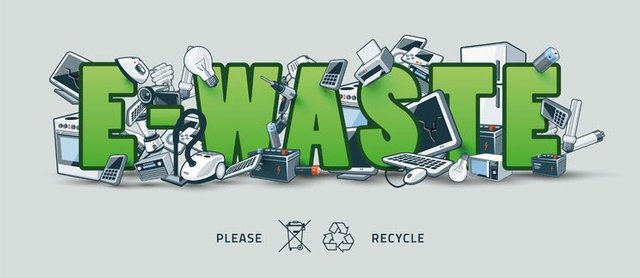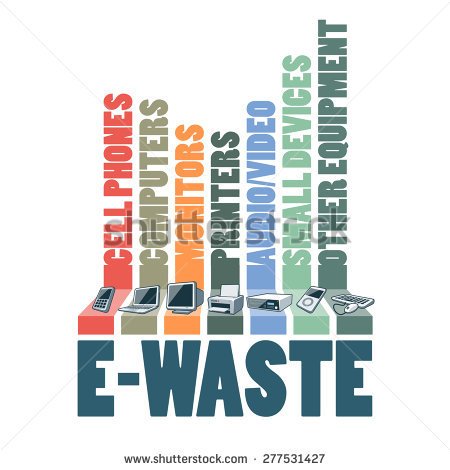E-waste is defined as electrical and electronic wastes that have run out of life and which have been dependent on the electrical current or the electromagnetic field of operation.

E-waste includes small and large household appliances, information and communication technology equipment, lighting equipment, electrical and electronic appliances, toys, leisure and sports equipment, which are over-aged.
It also includes medical devices, batteries, circuit boards, plastic covers, cathode ray tubes and lead capacitors.
A study by the United Nations University, the International Telecommunication Union (ITU) and the International Solid Waste Association estimated the amount of e-waste worldwide in 2016 at 45 million tons. The weight of e-waste in 2016 was about 4,500 times that of the Eiffel Tower.
Exposure to the risks of e-waste through exposure during unsafe disposal or unsafe recycling or exposure to residues is carried out in three ways:
Informal recycling, in which e-waste is recycled through primitive techniques to obtain waste materials. Appropriate technology or protective equipment is not used to allow hazardous chemicals to be emitted from electronic waste.
Formal recycling is carried out using specially designed equipment to safely extract the required waste materials while protecting workers from adverse health effects. These centers are expensive for construction and operation, and are rare in less developed countries.
Environmental exposure, which is the exposure of residents living within a specified distance from e-waste recycling areas or disposal of chemicals.

Health Risks:
Change in thyroid function.
Changes in mood and behavior.
Low lung function.
An increase in abortions and stillbirths, stillbirths and early births.
Increased risk of low weight and low height at birth.
People who live in e-waste recycling towns or work in recycling electronic waste have evidence of greater DNA damage.